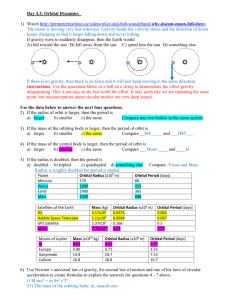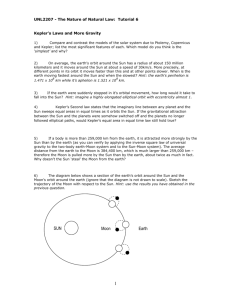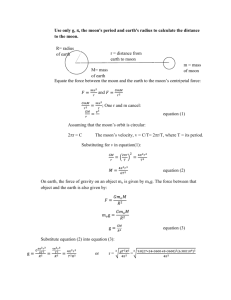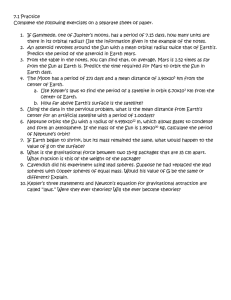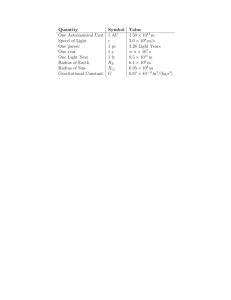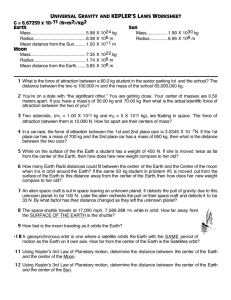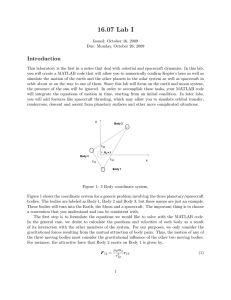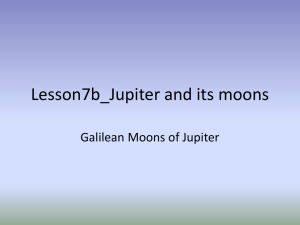Universal Gravitation and Kepler's Law Worksheet
advertisement
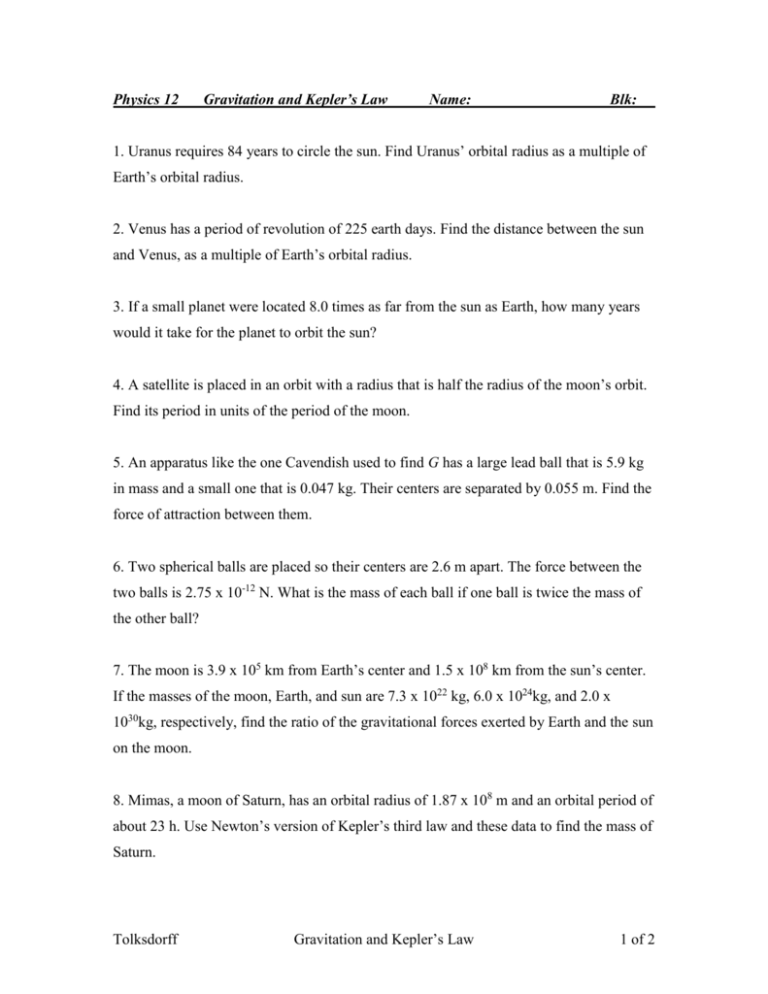
Physics 12 Gravitation and Kepler’s Law Name: Blk: 1. Uranus requires 84 years to circle the sun. Find Uranus’ orbital radius as a multiple of Earth’s orbital radius. 2. Venus has a period of revolution of 225 earth days. Find the distance between the sun and Venus, as a multiple of Earth’s orbital radius. 3. If a small planet were located 8.0 times as far from the sun as Earth, how many years would it take for the planet to orbit the sun? 4. A satellite is placed in an orbit with a radius that is half the radius of the moon’s orbit. Find its period in units of the period of the moon. 5. An apparatus like the one Cavendish used to find G has a large lead ball that is 5.9 kg in mass and a small one that is 0.047 kg. Their centers are separated by 0.055 m. Find the force of attraction between them. 6. Two spherical balls are placed so their centers are 2.6 m apart. The force between the two balls is 2.75 x 10-12 N. What is the mass of each ball if one ball is twice the mass of the other ball? 7. The moon is 3.9 x 105 km from Earth’s center and 1.5 x 108 km from the sun’s center. If the masses of the moon, Earth, and sun are 7.3 x 1022 kg, 6.0 x 1024kg, and 2.0 x 1030kg, respectively, find the ratio of the gravitational forces exerted by Earth and the sun on the moon. 8. Mimas, a moon of Saturn, has an orbital radius of 1.87 x 108 m and an orbital period of about 23 h. Use Newton’s version of Kepler’s third law and these data to find the mass of Saturn. Tolksdorff Gravitation and Kepler’s Law 1 of 2 9. A geosynchronous satellite appears to remain over one spot on Earth. A geosynchronous satellite has an orbital radius of 4.23 x 107 m. a. Calculate its speed in orbit. b. Calculate its period. 10. On July 19, 1969, Apollo II’s orbit around the moon was adjusted to an average orbit of 111 km. The radius of the moon is 1785 km and the mass of the moon is 7.3 x 1022 kg. a. How many minutes did it take to orbit once? b. At what velocity did it orbit the moon? 11. The asteroid Ceres has a mass 7 x 1020 kg and a radius of 500 km. a. What is g on the surface? b. How much would a 85-kg astronaut weight on Ceres? 12. How high does a rocket have to go above Earth’s surface until its weight is half of what it would be on Earth? 13. A 1.25-kg book in space has a weight of 8.35 N. What is the value of the gravitational field at that location? Tolksdorff Gravitation and Kepler’s Law 2 of 2
